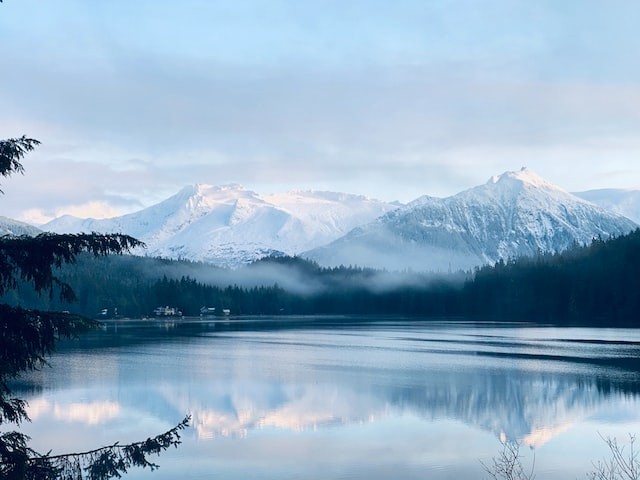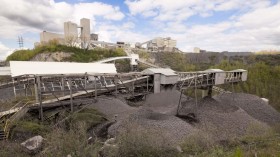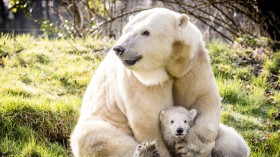Water security in mountain regions is dependent on a broader understanding of the complex interconnections between water supply and demand that extends far beyond the study of glacier melt.
According to new research published in Nature Sustainability, there is currently little information on how climate change will affect communities that rely on water from mountain snow and ice.
Rethinking mountain water security
 (Photo : Kayti Coonjohn/Unsplash)
(Photo : Kayti Coonjohn/Unsplash)

The study, led by Imperial College London, the University of Birmingham, the University of Zurich, the British Geological Survey, and the Pontifical Catholic University of Peru, in collaboration with local partners, suggests that this lack of integrated water security knowledge is due to a lack of understanding of what happens 'beyond the cryosphere,' or the contribution from water sources other than frozen water, such as hillslopes, wetlands, and groundwater.
According to new research, the effects of global warming and climate change are exacerbated in mountainous areas, as per ScienceDaily.
Glacier-related disasters like ice avalanches and glacial lake outburst floods are becoming more common, but they have serious and life-threatening consequences for the millions of people who rely on mountain water supplies.
The researchers described huge gaps in existing data on how communities use water from glaciers and mountain snow in conjunction with other water sources in their new study.
Because of complex mountain landscapes, localized weather systems, and a low density of data station records, constructing the picture is especially difficult.
Low adoption of new monitoring technologies and approaches, particularly in low-income countries with limited institutional capacity, is further limiting our understanding of high-altitude data-poor regions.
These factors make it difficult to develop models that can be accurately scaled up across watersheds.
Aside from these factors, the picture is complicated further by uncertainty about future water needs.
Data on population growth and likely adaptation to water security threats, as well as data on future expansion of irrigated agriculture and hydropower, are limited, all of which will have a significant impact on water access and allocation.
"In mountains, there are complex interconnections between the cryosphere and other water sources, as well as with humans," said Professor David Hannah, UNESCO Chair in Water Sciences at the University of Birmingham. "We need to identify gaps in our understanding and rethink strategies for water security in the context of climate change adaptation and shifting human needs."
The study's authors have called for a fundamental rethinking of the methods and technologies used to assess current water availability and model future scenarios.
Dr. Fabian Drenkhan, who researched while at Imperial and now works at the Pontifical Catholic University of Peru, stated that the future is likely to bring more variable water supply and rising water demand, posing a serious threat to water security in many mountain regions.
Our current incomplete picture is impeding effective climate change adaptation design and implementation.
In light of the increasingly negative impacts of climate change and other human interferences, a holistic perspective based on improved data and process understanding is urgently required to guide robust, locally tailored adaptation approaches.
Read more: Color-coded Management Plan Could Increase Water Security
Water security
Freshwater is humanity's most important resource, influencing all social, economic, and environmental activities.
It is a requirement for all life on our planet, an enabler or a constraint for any social and technological development, and a potential source of happiness or misery, cooperation, or conflict.
To achieve water security, we must safeguard vulnerable water systems, mitigate the effects of water-related hazards such as floods and droughts, protect access to water functions and services, and manage water resources in an integrated and equitable manner.
Humans rely on water to survive, and their societies have always chosen water-rich areas to settle in. In other words, in addition to being a basic daily need, we now use it for a variety of other purposes, both traditional, such as farming, and more recent, such as energy generation, as per Iberdrola.
The importance of water to human survival and development has always been obvious, but the time has come to look ahead. In this regard, the UN has issued a warning: if we do not change our current behaviors, the Earth will have a 40% water deficit by 2030.
And the fact is that despite the progress, we are making in terms of responsible water use and sanitation, demographic growth and certain other factors are endangering our water security.
Humans rely on water to survive, and their societies have always chosen water-rich areas to settle in. In other words, in addition to being a basic daily need, we now use it for a variety of other purposes, both traditional, such as farming, and more recent, such as energy generation.
The importance of water to human survival and development has always been obvious, but the time has come to look ahead.
In this regard, the UN has issued a warning: if we do not change our current behaviors, the Earth will have a 40% water deficit by 2030.
And the fact is that despite the progress we are making in terms of responsible water use and sanitation, demographic growth and certain other factors are endangering our water security.
Related article: Improving 'Crop per Drop' Can Increase Global Food and Water Security, Study Says [VIDEO]
© 2024 NatureWorldNews.com All rights reserved. Do not reproduce without permission.





